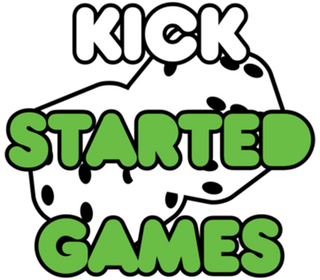Our Kickstarter Story
The Design Process
Based on personal experiences Stacey had with her father growing up, we began designing a story-telling game in 2018. It's easy to have an idea and make something that isn't fun and get discouraged, and that's where we were for two years--picking up the game every 3-4 months, making a massive revision to the rules or rewriting all the cards. We allowed ourselves the space to experiment. We are also lucky to live in Austin, where we have a thriving community of developers. After every revision, we'd pack up the game and head to one of the local comic/board game stores on playtest nights and let folks with some design sense test it out, realizing that not all feedback is going to be useful or actionable. After a few weeks of contemplation, we'd make more tweaks and try again, or just put down the game until inspiration hit.
In mid-2019, we started hosting dinner parties and playing with friends. That's when we learned that some people were intimidated by being put on the spot to tell a story spontaneously and could not participate effectively as the rules were written. Some people were just not interested in the theme. A few wanted to participate but weren't very good. But everyone enjoyed the activity when performed well by someone else. This pushed us to finally shift the rules of the game to be much more of a party game and much less of a solo storytelling opportunity: it worked! From this point onward, every story was a round of fast-paced hot potato and nearly everyone liked it more. This subtle tweak was what led us to decide to bring it to Kickstarter, and eventually to table top gamers everywhere.
The Development Process
By December 2019, we had something that was actually fun, and we'd been hosting dinner parties with friends (non-developers) and laughing hysterically pretty much every time. At this point, there were about 45 Characters, 25 Quests, and 80 Plot Twists. Stacey quit her day job to manage the development process of the game. As a sharp project manager (with an art background), this was a natural fit for her. We also interviewed and ultimately hired a couple of artists to draw custom characters and work on the graphic design of the cards, instructions, and box. Our plan was to go to Kickstarter in March 2020, with a handful of the cards finalized for promotional photos and ask the community for the funds to complete the artwork and do the first manufacturing run. We were expecting to go to some improv meetings and find funny folks to let us film them for the video. We were expecting to go to conventions throughout the year to drum up pre-orders and build a following of engaged gamers.
Not everything went as planned. COVID-19 swept the world in the early months of 2020. One of our artists wasn't able to help us. Conventions were cancelled. Meetings stopped. Filming groups of people having fun was impossible. So we adapted.
Stacey picked up all the graphic design work, managed the character art pipeline, and learned everything there was to know about launching a Kickstarter, marketing, manufacturing, shipping logistics, building web sites, building a following on LinkedIn, Instagram and Facebook, etc. Our timeline kept extending and extending. What we had hoped to do in 3 months took so much longer than expected. The general strain of COVID quarantine coupled with the financial burden of being self-employed and trying to run a Kickstarter was crushing at times.
Our November 2020 Kickstarter
Let me be clear: we were never ready for Kickstarter. There is no "ready" for your first Kickstarter, that is a myth. There is only "live" on Kickstarter. We spent a couple of months making a beautiful website and pushing people to it, in anticipation of our launch. We spent a lot of time making the Kickstarter page look as similar as possible to our website. Then we lit the fuse in early November.
What Went Wrong
We definitely made mistakes. Here's a few:
Audience Building: We attempted to build a following 35 days before launching our Kickstarter with about $1500 in funding. Most successful launches start 3+ months early and spend $30,000 across social media. Our ad spend did nothing for us. Stacey put a ton of effort and time into building marketing materials and posted religiously, and while we did gather a small following, it's hard to say if anyone backed us from that effort.
Market Fit: Kickstarter hates story games. We didn't know that until after we launched and some close friends introduced us to some veteran board game developers who chuckled at our naivete. Some things work on Kickstarter, but some things tend not to. Story games have a long track record of not getting funded, so we had our work cut out for us.
Market Timing: We were trying to sell party games during a pandemic. Take a second to meditate on that. Unfortunately, that was the situation, and although Tales of the Fabulist is a great game solo, it's so much better with a group. And we couldn't even show groups enjoying it!
American Holidays: We knew that going live in December and January was a death sentence, so we rushed to start in November. We found that very few pledges happened over Thanksgiving, which is a longish holiday where people are preoccupied with family instead of checking emails or looking at Kickstarter. Those empty days added tremendous anxiety for us. Generally, launching in November was probably a bad idea because people also want to spend their money buying gifts that can be given to loved ones in December. Our product was still months away from delivery.
Manufacturing Delays: Although we managed to get our materials to our manufacturing partner in China on-time, we didn't factor in Chinese New Year takes up a week of February. And although you won't hear about it in the news, China has experienced a number of COVID outbreaks that stalled manufacturing and shipping multiple times. The few minor adjustments with some color correctness, as well as the time differences when communicating internationally, both took up weeks of time. We'd hoped to ship all our boxes to backers by late April, but instead it'll be July.
Aiming Too High: We had no idea how many people would be willing to fund our game. Although the development cost us much, much more, we calculated $9,000 would be the cost of the first manufacturing run. That number has turned out to be very accurate. However, it would have been a significantly less stressful Kickstarter if we had asked for $4,500 or less. We reached our goal near the end of the deadline, which was wonderful, but the best Kickstarters all fund within a couple of days and gain additional traction when they are recognized as "Taking Off". We might have ended up with a lot more backers with that increased visibility. Instead, we had to work hard to be discovered since we were buried in the noise.
Pledge Tier Confusion: The moment we went live, several people wanted to pledge more that our highest tier. Kickstarter pledges are confusing for someone who hasn't used it before--which was most of our backers. Although you can add more money to a pledge (say pledge $100 for a $30 Tier and get 3x of that item) I have never seen anyone explain that well. And a lot of people don't want 3x of something, they just want to see you succeed. We had a few people back us with large pledges for no reward at all. What we learned by talking to our backers is that a good Kickstarter has pledge tiers at regular intervals from about $15 to about $200. And give them slightly more stuff at each tier, not multiples of things. That's why we added a T-shirt, a custom Lego minifig and a custom-drawn card at different pledge levels, to fill those gaps.
What Went Right
We did a few things right too. Some accidentally. Such as:
Complete the Product First: There is a lot of information about Kickstarter that is dated and inaccurate. The appetite for good ideas and incomplete products is utterly gone from Kickstarter these days. It's understandable, too--lots of people have been burned by backing incomplete products only to find roadblocks that aren't simply manufacturing details. By having an almost-totally-complete game ready to print, we gained that last 5% of backers that were genuinely interested in the game.
Cashing in Social Capital: I personally contacted about 1,000 people in my industry and asked them to look at and potentially back Tales of the Fabulist. Stacey sent thousands of emails to folks who signed up for her mailing list over the years. We broke those down into three categories: Close Friends/Family, Friends, and Acquaintances. We contacted them differently, because you talk to those groups differently, and at a different frequency. From these efforts came 95% of our pledges.
Building a Brand: We started out with a fun name and worked with a friend to build a great, memorable logo. Everyone who has seen it has laughed or commented on it. Any kind of positive engagement with your audience is valuable. A solid brand identity will allow us to make more products. I think a lot of people don't bother, and it hurts them.
Focusing on Quality: There are so many games out there. I feel like too many are slapped together quickly and the first efforts are 'good enough'. Although it's a simple product, we endeavored to create high quality character art in a distinctive style. We pushed the graphic design of the cards, instructions, and box as far as we could. The rules alone have gone through a dozen iterations. The cards have been rewritten and playtested more times than we can count. The print quality of the neoprene mats alone was adjusted four times to get it right. We want Tales of the Fabulist to exude the charm and joy that we saw in it from the beginning, for every player. I think anything less would not have been a very convincing sale for our backers.
Online Sales: It's a little early to claim this as a success, but everything we've read is that Amazon is the key to continuous sales for smaller titles. There are lots of hoops to jump through to become an Amazon Prime seller, but we did it! We also have our own Shopify site that has automatic fulfillment with our warehousing partner in Austin, so our shipping is quick and efficient from our website, too. As an aside, if you really want to support a creator, always buy from their website. The difference to them at the end of the day is astonishing.
Final Words
As if this weren't long enough, after rehashing our last 18 months I believe there's room for some forward-looking statements. We are hoping to start doing conventions and supporting the game... please come up and say hi! The remainder of our year will be filled with sending out reviewer copies, building an audience in the improv community, and trying to make inroads with small and large retailers. All very uncharted territory for us, I assure you. If all goes well, later this year we will do our first re-order. We're also considering the prospects of returning to Kickstarter, perhaps in early 2022, with a new project. I hope that we will gain the support of the Kickstarter community now that we have a track record of following through on our promises. And finally, if you're a tabletop publisher looking for new games, or interested in publishing Tales of the Fabulist, contact us. Stacey and I have about 5 new game prototypes with some awesome mechanics that need love and attention to take to the next level.
RETAIL PARTNERS
VIP - Founding Fabulists
Alan Welchley
Andy Cheren
Bill Tatar
Blessing Ri
Bradford Grimm
Brandi Coatsworth
Candace Hughes
Carmen Erwin
Christine
Clare Bennett
Deborah Mannino
Dev Chanana
Devin Pillow
Ed and Jane-Ann Lieblick
Elbert Thorton
Erin Shipley
George Warren
Greg Gonzalez
Heather Zoric
Inke Deane
Jennifer Welch
John Szeder
Julia Thornton
Larry Milton
Lisa Slater
Lynn L Lilly III
Mark Lewis
Matthieu Burleraux
Melissa Preston
Pam Terry
Philip Shenk
Reid Phillips
Rene Oubre
Richard Wingfield
Robert R. White
Tara Valkyrie
Theodore Hughes
Tom Kent
Veronica Anderson
Wade Berzett
Founding Fabulists
Alex Kolkhorst
Alex Urazov
Ali Kozoll
Amanda Svatek
Anne Holmes
April Kaminski
Benjamin Terry
Bethany Morse
biomonk
Catherine
Cecelia Rafferty
Chandler Copenhaver
Courtland Jones
Doris Gherasim
Ellen Terry
Eric Abrahams
Eric Doggett
Erik Touve
Flambi Toys
Frank Lucero
Gage Slater
Gameeleon
Jakub Olkiewicz
Jason Gabel
Jennifer Snyder
Jeremy Price
John Abrehamson
Josiah Dempsey
Justin Stark
Kaycie Slater
Kelly Diana Brogdon
Kimberly Unger
Kory Fluckiger
Kurt McClung
Leif Simonson
Linda and Lynn
Lynda Brown
Maccari
Melissa Vitello and Bryan Ricke
Philip Houston
Raymond Stump
Sean B.
Slavisa Dujkovic
Stefan Lednicky
Terry DeBarger
The Creative Fund by BackerKit
Torsten Stelling
Valerie Sawyer
Warren Spector
Wilson Villegas
Yann Suquet
Special Thanks
Monkey Gun Games Team
Jason HughesStacey Welchley
Christiana Clark
Mali Ware
Playtesters
Catherine HughesMark Lewis
Lisa Lacher
Tara Valkyrie
Playtesters
Sam ShiffmanBen Shiffman
Jamie Dalton
Jana Salinger
Playtesters
Todd GillissieLisa Slater
Philip Hughes
Ally Galdamez
Tiffany Smith




